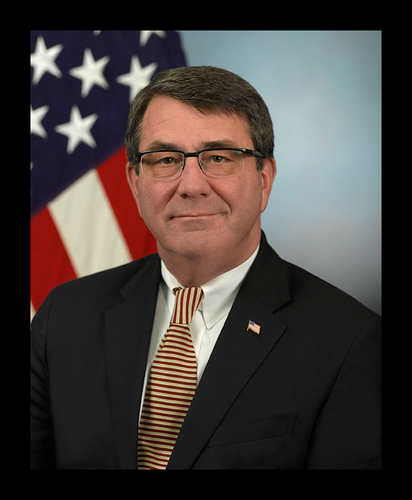
The following is excerpted from the New York Times obituary article of October 25, 2022 by Clay Risen.
Ashton B. Carter, who harnessed his training in theoretical physics and knowledge of nuclear weapons to climb the leadership ranks at the Pentagon, culminating in two years as secretary of defense under President Barack Obama, a position he used to further open the military to female and transgender service members, died at the age of 68 of a heart attack at his home in Boston.
In 1976, Carter received a B.A. with a double-major of physics and medieval history from Yale College, summa cum laude, Phi Beta Kappa. He wrote two senior theses: one on the use of Latin in 12th-century Flanders, and another called “Quarks, Charm and the Psi Particle,” the latter of which was published in “Yale Scientific” in 1975.
One of his professors was so impressed by Carter that he hired him as an experimental research associate at Fermi National Accelerator Laboratory in Illinois for summer research in 1975 (where he worked on quark research). Carter was also a research associate at Brookhaven National Laboratory in 1976.
After Yale, Carter won a Rhodes scholarship at the University of Oxford. He received his DPhil in theoretical physics on Hard processes in perturbative QCD in 1979 and was supervised by Christopher Llewellyn Smith. It was at Oxford that, through one of his mentors, he first developed an interest in the policy side of physics. After returning to the United States, he held a number of fellowships and short-term posts, including at the Pentagon, before taking a position as a professor at Harvard’s John F. Kennedy School of Government in 1984.
Carter was among the few people who have held four of the top posts at the Pentagon, starting as an assistant secretary under Bill Clinton. By the time Obama nominated him as secretary of defense in 2014, he had worked in almost every corner of the department, including nuclear policy, logistics and weapons development.
Recollections
Thomas Appelquist, Eugene Higgins Professor of Physics, reflected, “As an undergraduate, Ash did research at Brookhaven laboratory with Bob Adair, Mike Schmidt, and Henry Kasha, a long-time Senior Research Scientist in the Physics Department. Ash was especially close to Henry and his wife Helen.”
“I remember a delightful dinner with Ash at Henry and Helen’s house, and another with Ash in Oxford during his time there are a Rhodes Scholar. He was a modest person, but with a quick sense of humor and widely-ranging interests. Early in his career in government advising, he returned to Yale to give a Physics Club talk about nuclear weapons. I remember him quoting something from Thucydides’ history of the Peloponnesian War.”
“The last time I saw Ash was on a visit he made to Yale when he was Secretary of Defense. He stopped in Sloane Physics Lab for an arranged visit with Henry in the Chair’s office. As I entered the building, I caught a glimpse of Ash walking down the main hallway trailed by a couple of three-star generals and a security agent.”
R. Shankar, J.W. Gibbs Professor of Physics, recalled the time when Carter came to give a Physics Club talk, “Ash came to give the physics club here and a lot of the info was classified; something new in the physics world. He was discussing some underground silos where ICBM were stored in a circular track and constantly kept in motion to avoid a strike. When asked what kind of vehicles were used to circulate them, he paused for a while and said ” All I can tell you is that they had an even number of wheels.”
For more information, please see the full New York Times obituary article and the previous Yale Physics article, and links therein, on Ashton Carter’s appointment as Defense Secretary under President Obama linked below. Further biographical information can be found on his wikipedia page also linked below.